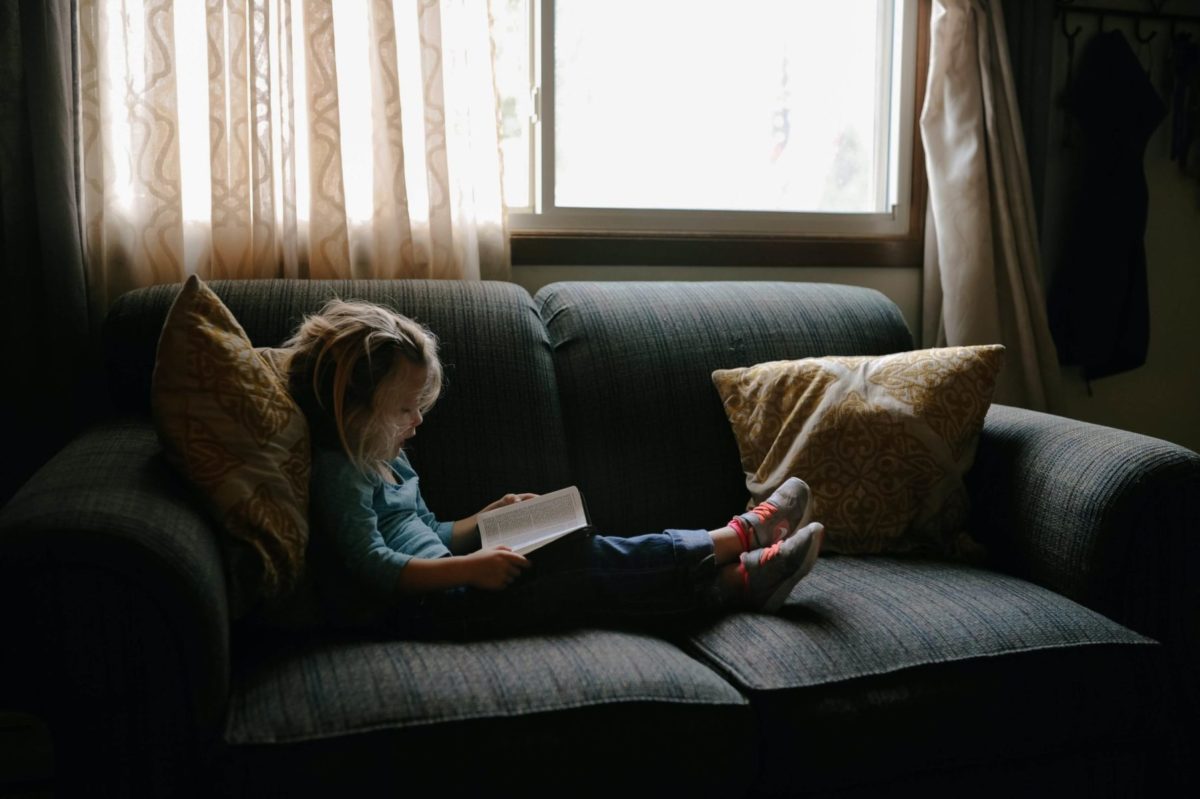Whether you’re homeschooling due to coronavirus, gearing up for a summer of babysitting, or a parent or teacher wanting to instill a lifelong love of literature, poetry offers a multitude of options for engaging children. Moreover, this early education can dispel many common myths about poetry: That it’s confusing, scary, elitist, or niche. On the contrary, poetry packs serious benefits for kids, from acting as an emotional outlet to improving memory. These five age-appropriate activities can jumpstart an in-depth poetry journey.
1. Paint Chip Poetry
This playful Pinterest fave weaves together the poetic and the visual. Pocketing brightly colored paint chips is a fun activity in itself for most kids, but this exercise takes it a step further, inviting children to use the paint chips as a backdrop for their words. Whether kids select shades of orange, yellow, purple, or another enticing hue, they should then write a poem about what the color awakens in them and what images they associate with it. Teachers who have previously used the activity recommend adding guidelines, like instructing kids to implement one metaphor and three similes.
2. Found/Collage Poetry
Many of us mastered this crafty activity in elementary or middle school. The concept is simple: Gather old magazines, newspaper articles, brochures, or even other poems—anything that can be mined for interesting, existing language. Have the child or children in your life cut and paste to create a new poem based on these sources. This, too, adds a visual element to poetry and can encourage kids to see the art form as active and constantly evolving. Plus, scissors, glue, and construction paper always spell lots of fun.
3. Poetry Scavenger Hunt
The amusement and intrigue of poetry lie in its exploration. This activity emphasizes that. Make a scavenger hunt guide—specifics are up to you—that instructs the child in your life to find poems with various features. Examples include asking them to find a haiku, a poem about a pet, or a poem that rhymes. To make their search easier, provide a small library of poetry collections, or an online resource like the interactive Children’s Poetry Archive.
4. Poetry Museum
Poetry involves looking more deeply at the images and details of daily life. To exemplify this, just observe the classic children’s poem “Where the Sidewalk Ends” by Shel Silverstein. Silverstein takes an average setting and enlivens it with whimsy and care, noting where “the moon-bird rests from his flight” and “where the asphalt flowers grow.” Fill a mystery bag with seemingly ordinary items: seashells, leaves, dental floss, a baseball, or anything else you can find (the more variation, the better). Have kids describe these items “like a poet,” then use their creative, vibrant descriptions to start a poem or to enrich an existing project. How can we see routine objects in a different, more strange and stunning light?
5. Make Your Own Poetry Slam/Salon
Before unveiling our final portfolios in my high school creative writing classes, we would transform the classroom into a coffee shop, complete with artsy string lights, soft, instrumental music, and tasty refreshments. This ritual always made the act of sharing work seem special and reverent. This same idea can be adapted for any age. Scrounge up decor and snacks to amplify the ambience, then encourage your young poet to let their voice be heard. Of course, give them plenty of encouragement—and maybe a few suggestions to build upon their learning.
When was the first time you felt a connection with poetry? Consider sharing that story and moment with a kid in your life. And don’t forget the benefits of returning to beginner’s mind—these simple activities might encourage you to be more playful and experimentative within your own poetry.




